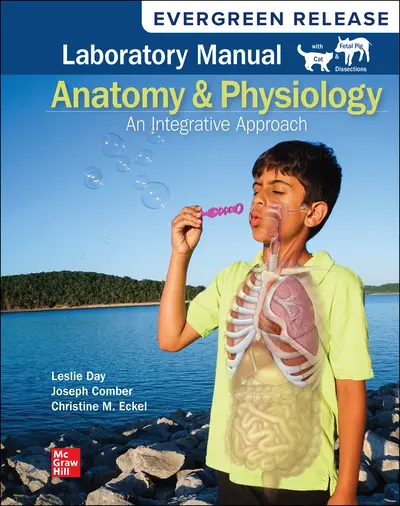Leslie Day
Leslie Day earned her B.S. in Exercise Physiology from University of Massachusetts at Lowell, an M.S. in Applied Anatomy & Physiology from Boston University, and a Ph.D. in Biology from Northeastern University with her research on the kinematics of locomotion. Starting in 2002, she worked as a Lecturer in the Biology Department o Northeastern University in Boston, Massachusetts, teaching several sections of anatomy and physiology. In 2008, she transferred to the Department of Physical Therapy, Movement and Rehabilitation Sciences at Northeastern University to run the Cadaver Laboratory and teach gross anatomy and neuroscience to undergraduate and graduate students ina wide range of majors. In addition, she coordinated and taught postgraduate continuing education courses. During her time, she was promoted to Associate Clinical Professor and served as the Associate Department Chair. In 2019,she moved to Texas A & M University as Instructional Associate Professor to join a new program in the College of Medicine called Engineering Medicine (ENMED). The program combines medicine and engineering degrees utilizing nontraditional, innovative teaching methods. In her role, she is the course director for medical gross anatomy, teaches in the neuroscience course, and aids in the innovative curricular development.
She has received Northeastern University’s teaching with technology award three times and in 2009 was awarded the Excellence in Teaching Award. In 2017, she received national recognition for her teaching by being the recipient of the AD Instruments Sam Drogo Technology in the Classroom Award from the Human Anatomy and Physiology Society (HAPS). She has been an active part of HAPS for several years, and currently serves as Treasurer on the Board of Directors. She is also a member of the American Association for Anatomy and the American Association of Clinical Anatomists. Her current research focuses on the effectiveness of different teaching pedagogies, including the flipped-classroom and TBL, and its effect on students’ motivation and learning.
Joseph Comber
Joseph Comber received his B.S. in Biology from Neumann University, his M.S. in Biology from Villanova University, and his Ph.D. in Immunology and Microbial Pathogenesis from Thomas Jefferson University. While completing his graduate degrees, he served as a teaching assistant in the anatomy and physiology course at Villanova University and as an instructor in anatomy and physiology laboratories at Neumann University. After finishing his Ph.D., he completed a postdoctoral fellowship in vaccine immunology, where his research focused on identifying T-cell epitopes generated during infection. He joined the faculty at Villanova University in 2014 and is currently an Associate Teaching Professor in the Biology Department. In this role he teaches anatomy and physiology for pre-health profession students, histology and human anatomy for Biology majors, and a course in vaccines and public perception for nonscience majors.
Joseph is a two-time semifinalist for the Lindback Award for Distinguished Teaching at Villanova University and serves on several departmental and college committees. He is a member of the Human Anatomy and Physiology Society (HAPS), the National Science Teaching Association, and the Society for College Science Teachers. When not in the classroom, Joseph enjoys coaching Little League baseball and spending time with his wife and son.
Christine M. Eckel
Christine Eckel received her B.A. in Integrative Biology and M.A. in Human Biodynamics from the University of California, Berkeley, and her Ph.D. in Neurobiology and Anatomy at the University of Utah School of Medicine. She has taught a two-semester anatomy and physiology course for pre-nursing and pre health-science majors, and an advanced dissection course for premedical students at Carroll College; stand-alone general biology, human anatomy, and human physiology courses at the University of California at Berkeley and Salt Lake Community College (SLCC); human gross anatomy and medical histology for medical students, and anatomy review courses for residents in orthopedic surgery and pathology both at the University of Utah School of Medicine (U of USOM) and the West Virginia School of Osteopathic Medicine (WVSOM). She has also advised pre-med, pre-PA, pre nursing, and pre-PT students. Christine also headed the Body Donor Program at WVSOM. Christine is the author of Human Anatomy Laboratory Manual, 3e (McGraw-Hill Education). She has also authored several supplements and individual chapters for textbooks in human anatomy and human physiology.
Christine is currently serving on the Board of Directors as Secretary for the Human Anatomy and Physiology Society(HAPS). Her previous service to HAPS includes two terms serving as Western Regional Director, and many years serving as Chair and member of the Cadaver Use Committee. Christine has also served on other committees for both HAPS and the American Association of Anatomists (AAA). She is an ad hoc reviewer for the journals Anatomical Sciences Education and Medical Education. Her research is in the field of teaching innovation and educational outcomes research. With over 25 years of experience engaging with community college students, medical students and medical residents in orthopedic surgery, pathology, and gynecologic surgery, Christine has a unique appreciation for the learning challenges experienced by students at all levels. Christine’s passions for human anatomy, classroom and laboratory teaching, biological dissection, and photography are evident throughout the pages of this laboratory manual. In her spare time, Christine loves to take her English Setter, Zelda, hiking, mountain biking, cross-country skiing, and exploring the great outdoors—always with her camera in hand.
